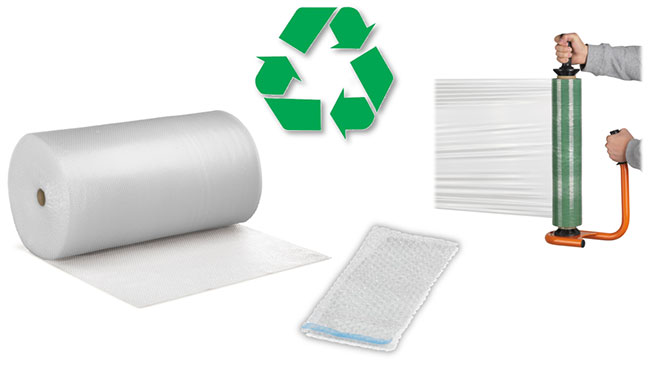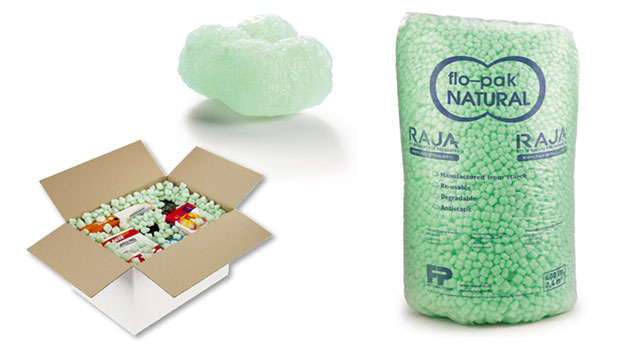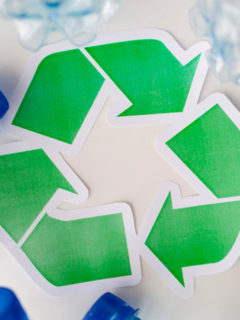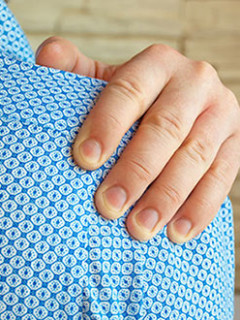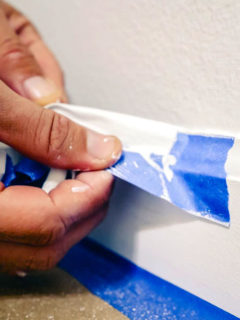Let’s kick off immediately by kicking in an open door: the packaging sector is becoming more sustainable, at an ever-increasing pace. Where did the days go when you could still ship products in a monstrously large box undisturbed? Or when recycled packaging materials barely existed? Sustainable shipping and packaging has become a must; and a good thing too! Together with RAJA, dig through 11 tips that will help you show your packaging at its most sustainable.
Eleven tips for sustainable shipping and packaging
► 1. Renewable? Gladly!
Those who want to ship and pack sustainably should opt for solutions made from renewable raw materials. These are materials that nature can provide us with almost infinitely. Just think of trees, the basis of paper and cardboard. Or vegetable starch, the basis of bio-based plastics.
The advantage of this is that we have to worry less about exhausting the source (unlike petroleum). It also reduces CO2 emissions. The CO2 that is released anyway when burning these materials is eventually absorbed again by new growing crops.

► 2. Less air, more volume
Are you using a box that fits poorly around your product? Then there is a high risk that you will ship masses of air with it. And sending pure air is something nobody wants. It annoys your customers, and perhaps even more importantly: it is a very expensive way of shipping for you. The solution is packaging tailored to your product. Some concrete examples are boxes with variable filling height, flat letterboxes, book packs, etc. Packaging that fits well around your product gives you several advantages:
- Your boxes are more compact so more orders fit in a van/truck.
- You need significantly less filling material. Another saving!
► 3. Make returns more sustainable
For some e-shops, returning an order is now the normal thing to do. Those who order clothes, for example, can no longer do without the peace of mind of a return option. To avoid putting even more packaging material on the market, it is best to make your original packaging ‘return proof‘ already. This can be done, for instance, with a box with two adhesive strips. The first strip is used by your packer to close the box. The second strip is used by your customer: if he wants to return the parcel, he simply has to remove the adhesive strip, close the box and deliver it to the parcel service.
Want to know more? Improve your return policy with a return box ]► 4. Opt for mono-materials
Consumers sometimes have a very difficult time sorting through packaging. It becomes even more complex if that packaging is made of different materials that you cannot separate. With mono-materials, you make everyone’s life much easier. Basically, your entire packaging consists of just one raw material. An example is paper: use a box, padding, tape and packing list envelope – all made of paper/cardboard. Consumers can sort that together in one smooth move and have it recycled.
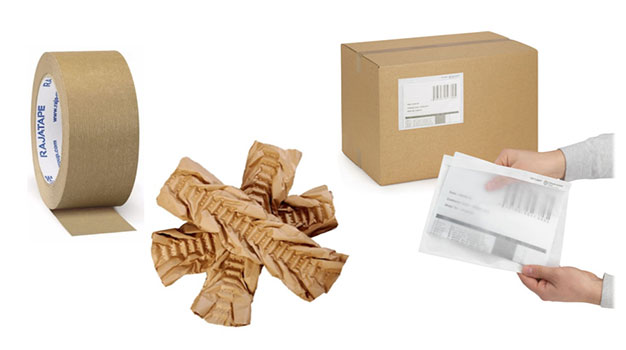
► 5. Increase delivery probability
Nothing is more frustrating than a parcel that cannot be delivered from the first time. The courier then has to drive back the next day, and oops!….. there goes those CO2 emissions up again. In many cases, you can solve this problem by choosing a different type of packaging. Ever thought of a flat letterbox box? This type of box is extra thin so it fits in the slot of a letterbox without any problems. Nice and compact + delivered without any worries. And you can fit more in it than you think.
Want to know more? Send faster and cheaper with a letterbox box► 6. Reuse old packaging
Not throwing away old packaging but reusing it is probably the easiest way to be sustainable with our waste. Take cardboard, for example. It is one of the most popular packaging materials. You can easily reuse a cardboard box in another form. And for that, we bring the cardboard perforator into the picture. As a company, you use it to convert old cardboard into filling material. You then use it to fill empty spaces in a box and secure your products more firmly inside. That gives you safe shipping and a sustainable image.
Want to know more? How to make free buffer paper with a cardboard perforator ]► 7. Recycle, recycle, recycle
We cannot repeat it often enough: proper sorting and recycling is the key concept of sustainable waste management. On cardboard, glass and metal, the Netherlands is one of the best students in the European class. When it comes to plastic, however, like many other countries, we still have a long way to go. So set a good example and opt for plastic packaging made of recycled material as much as possible.
Moreover, make it clear to your customers how they should sort your packaging (because not all plastic is the same). That way, we are one big step closer to closing the resource cycle. Below you can see environmentally friendly bubble wrap, grip bags and wrapping film. Because of their transparent appearance, you will probably hardly see the difference with traditional plastics, but these products are definitely made from recycled materials. The lack of a dye also makes it even easier to recycle these products a second time (or more) afterwards.
► 8. Inform recipient about waste separation
]” Should that packaging now be thrown with the plastic, or rather with the residual waste anyway? ” It is really not always clear to the average consumer what to do with packaging. So make it clear how a package should be sorted. This can be done during the ordering process or when receiving the parcel. Give a word of explanation about the symbols on the packaging and what it means for the sorting process.
Want to know more? Read all about plastic recycling here► 9. Close your packaging once with paper
Paper tapes and gummed adhesive tapes are an excellent alternative to traditional plastic tape. After bonding, you may simply sort and recycle the adhesive tape along with your cardboard box. Once recycled, it forms the basis for new products made of paper or cardboard. That completes the circle!
Want to know more? Read all about the benefits of gummed adhesive tape here► 10. Opt for bio-based plastics
For some years now, in addition to traditional petroleum-based plastics, you can also find plant-based variants. Examples include maize starch and potato starch. The advantage is that these raw materials are renewable and filter CO2 from the air. Keep in mind that you should always sort biobased plastics correctly as they do not simply break down in nature.
Want to know more? Check out our potato starch air cushions here.► 11. Use plant-based padding chips
We are all familiar with the white padding chips made of polystyrene. An alternative to these are all-vegetable chips made of starch. After contact with water, they break down completely and leave no trace. They are the ideal ‘green shock absorbers’ in your box.











